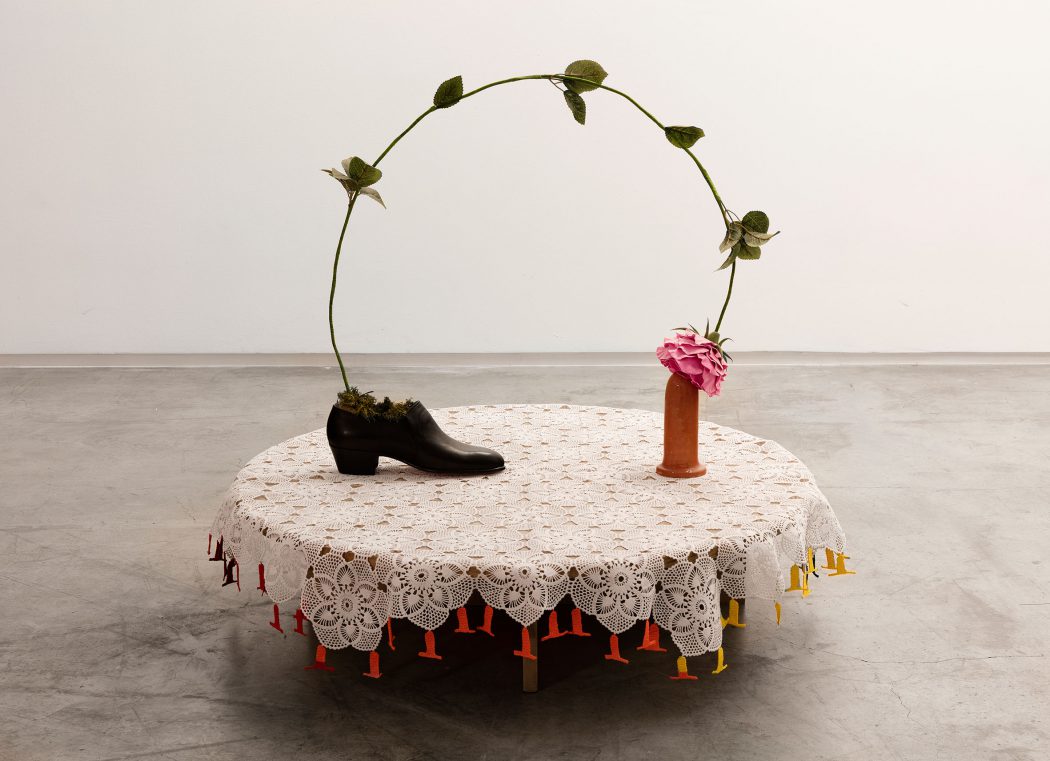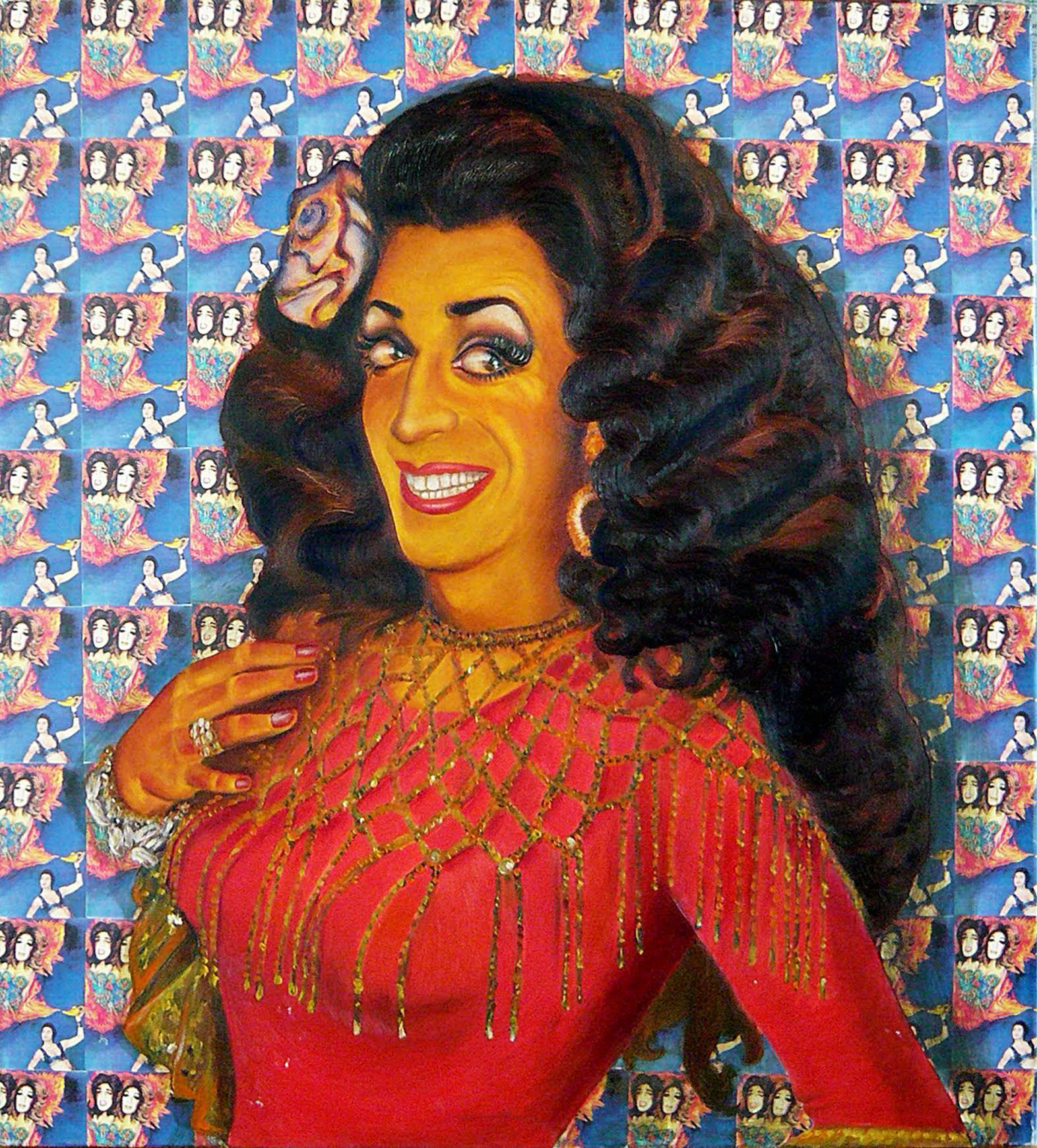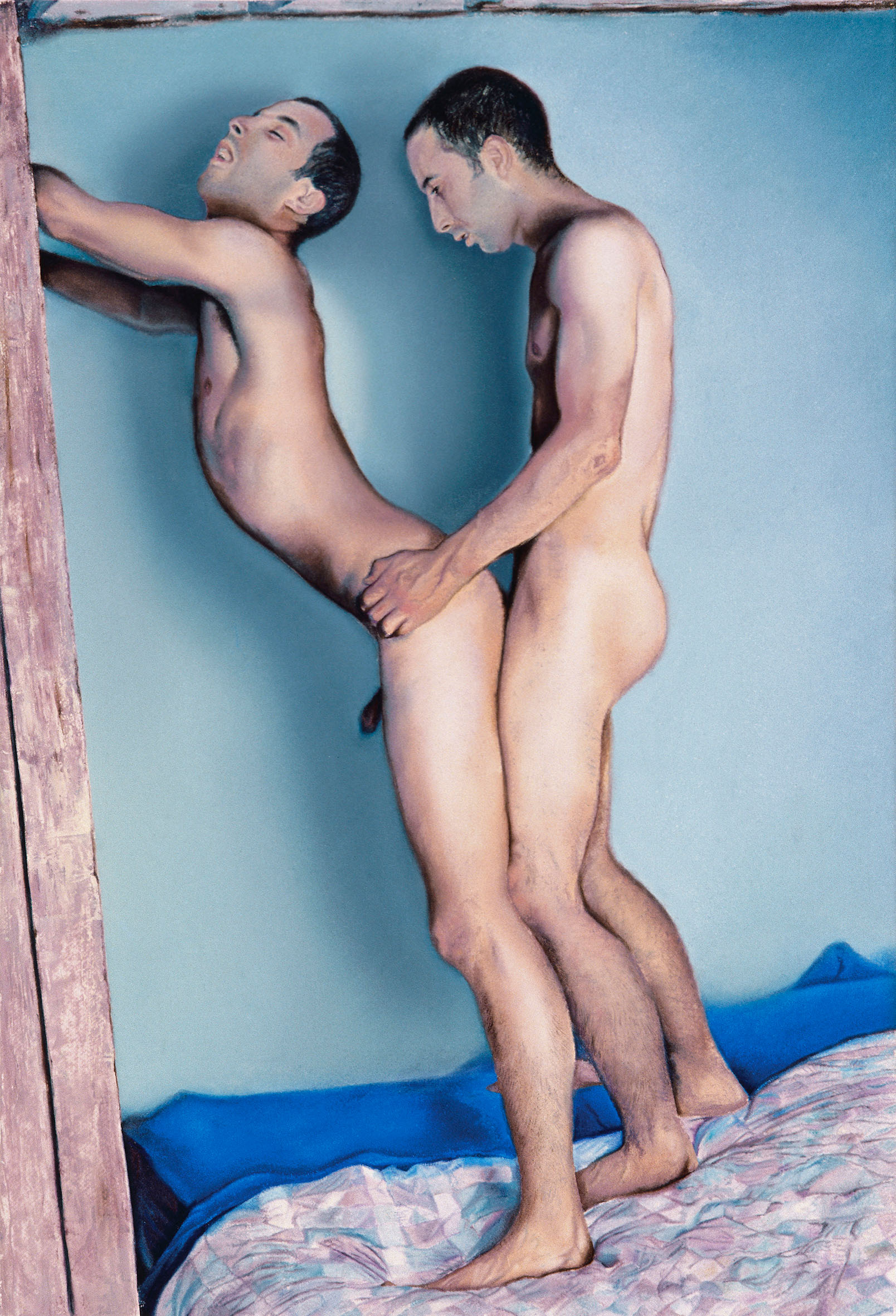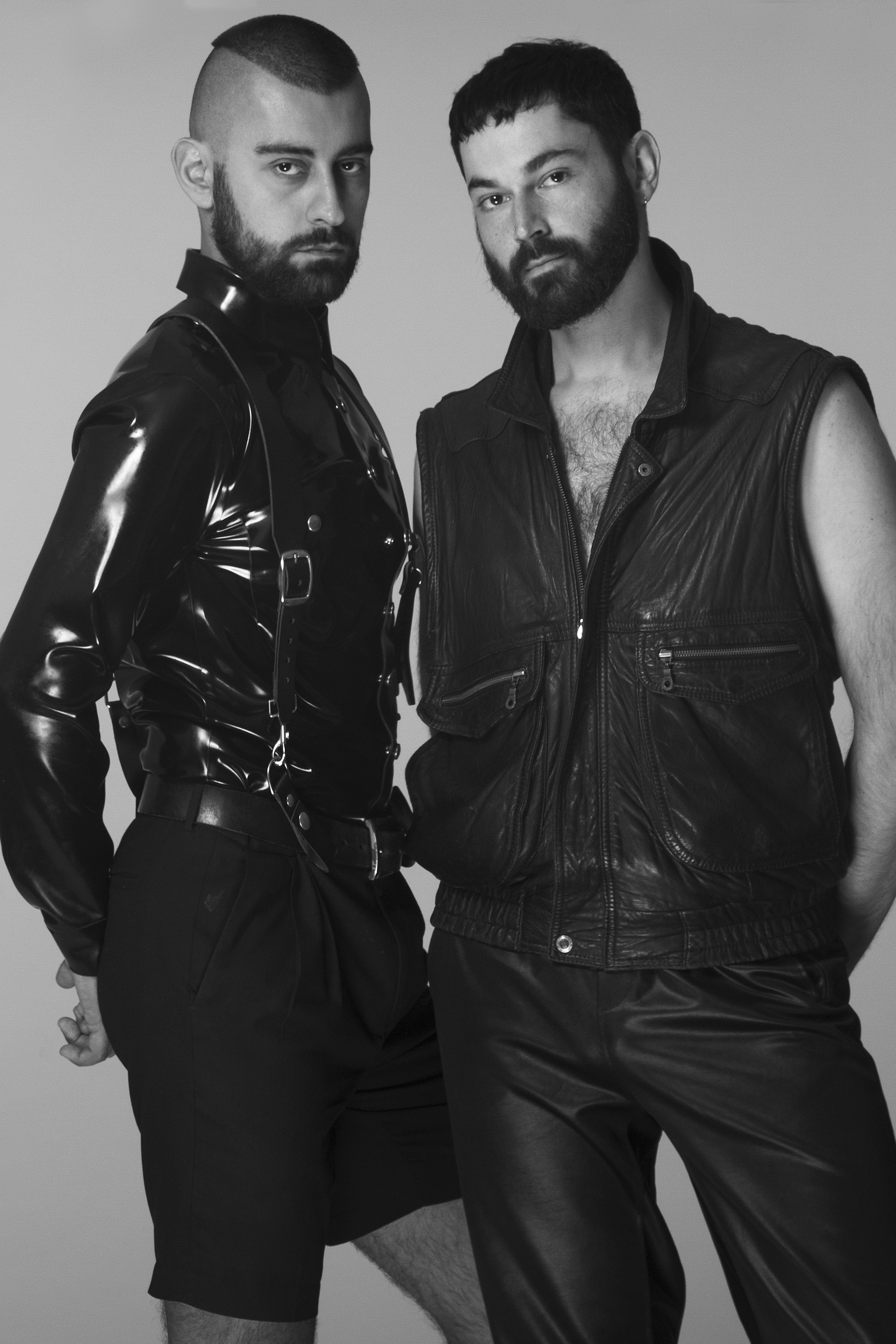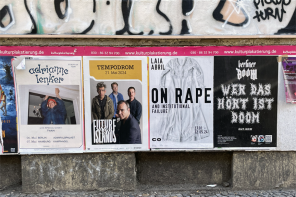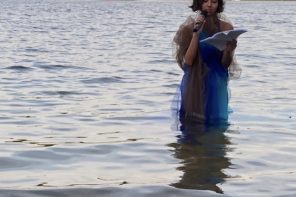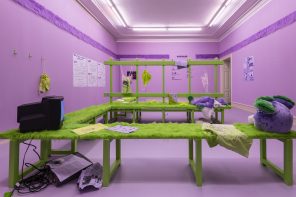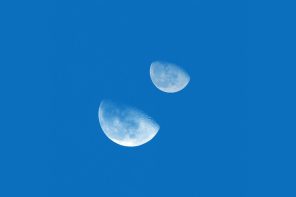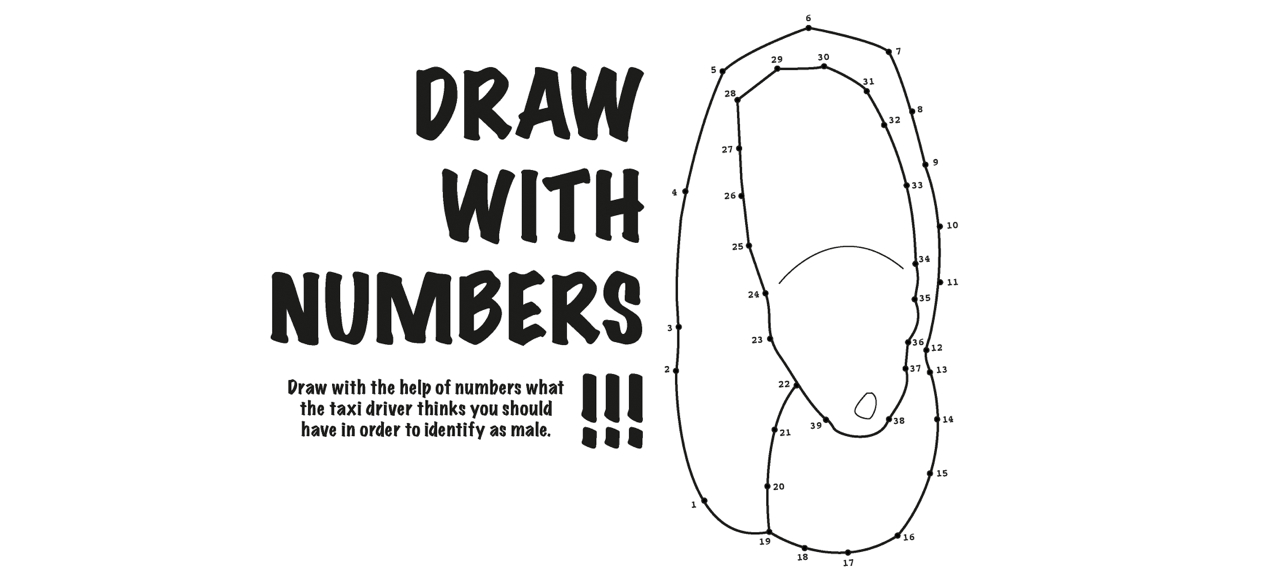Former Istanbulites and current Berlin-based artists and curators Emre Busse and Aykan Safoğlu describe the letter “ğ” or soft g as “the queerest of the Turkish alphabet” and invite viewers to explore its symbolic possibilities in a new group exhibition at the Schwules Museum in Berlin. The exhibition focuses on the cultural exchange between Turkey and Germany with a specific focus on LGBTIQ+ and feminist artists and issues. Raising questions about migration and queer politics, and rejecting marginalization, “Queer Forms Migrate” is a historically relevant and needed intervention into the Berlin art scene. At the same time, it is both proof and a sign of the empowering practices of queer and immigrant communities in and beyond Berlin.
Cihangir Gümüştürkmen
Fatma Souad, 1997
Taner Ceylan
Taner ve Taner / Taner und Taner / Taner and Taner, 2003
The title of the exhibition, the letter “ğ” was first introduced into the Turkish language in 1928 to replace the Arabic letter ghayn. In modern Turkish, it has transformed into a silent letter, leading to common pronunciation mistakes especially for non-Turkish speakers. But more importantly, the soft g represents the westernization of a formerly east-oriented Turkey, providing abundant metaphors and meanings for the exhibition’s curators. Transformed into a hybrid form, the soft g becomes a symbol of the subversive power of queer and migrant artistic expression. Unlike former exhibitions at the Schwules Museum, it also marks the beginning of a much-needed focus on the diversity of Berlin’s migrant and queer artists.
ğ – soft g – Queer Forms Migrate is a group exhibition that takes artistic migration as a many-sided experience. It includes works from artists who move between Istanbul and Berlin and who cross the borders of Turkey and Germany through their artistic practices. Juxtaposing old and new work in richly diverse media and covering a time period between the early 1980s and the present day, the exhibition invites its viewers to transcend widespread assumptions about migration, queerness and artistic experience. The collection in this exhibition creates new solidarities. By having both a historical and contemporary perspective, it celebrates the work and commitment of queer and migrant artists.
Some of the works offer a historical look into the queer migrant communities in Berlin. The portrait of Fatma Souad, the cofounder of the famous Berlin party Gayhane, by Cihangir Gümüştürkmen, welcomes the viewer with a playful smile. Fatma Souad looks at us proudly and playfully, inviting the viewer to celebrate the work of queer migrants. On the other side of the exhibition hall, there is a video installation by Ayşe Erkmen, Conversations, a collection of Turkish tense suffixes ‘–miş’, used to speak about unwitnessed events. This work references Erkmen’s earlier work of ‘–miş’ suffixes installed on a building on Heinrichplatz, just across SO36 Club in Kreuzberg where Fatma Souad’s Gayhane takes place. By repeating various forms of this suffix, Erkmen’s work holds a mirror to the indirect and clichéd narratives about migrant and queer communities.
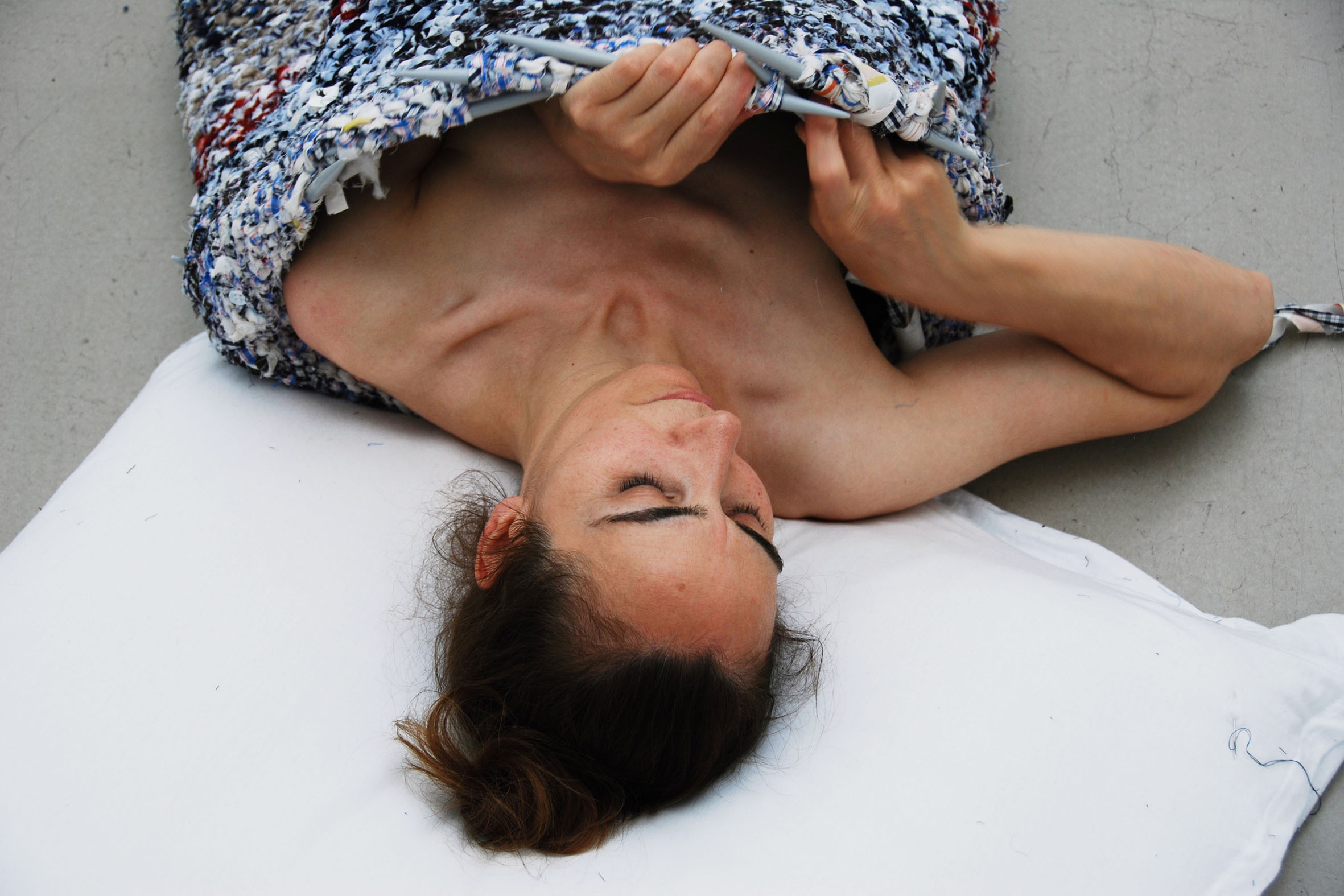
Mehtap Baydu
Koza / Der Kokon / Cocoon, 2015
More recent works also offer encouraging juxtapositions of intercultural exchange. Viron Erol Vert’s interpretation of a sling offers a tongue-in-cheek comment on the libidinal experience of the queer migrant soul. By covering a black leather sling with a red kilim (a traditional carpet), it explores the hybridity of the queer and migrant artist. Another work, Ming Wong’s 2011 performance Biji Diva! is a sound installation commissioned by HKW Berlin. The artist learns how to sing like the famous transgender singer Bülent Ersoy from Turkey, suggesting the possibility of a melodic and many-sided intercultural exchange. Several other works cover the walls and the floor of the exhibition hall, challenging heteronormativity and gender binarism and offering further insights into immigrant and queer perspectives.
With a historical and contemporary focus, the design of the exhibition leads the viewer to experience it as a collective experience. There are no wall texts describing the works. This decision allows viewers to participate in the exhibition without losing the communal and intersectional quality of the exhibition’s conception. The exhibition brochure, however, becomes a guide, inviting the viewers to experience this collectivity in their own terms. At a time when we need stronger and broader solidarities, “Queer Forms Migrate” is a welcome statement that recognizes its own community and challenges different forms of marginalization. It is also a much needed call to celebrate the queer and migrant artistic community of Berlin, inviting us to join in the challenge.
The exhibition extends beyond the Schwules Museum by inviting viewers to several additional events such as artist talks, readings, and lectures held in Turkish, German and English. The aim, according to the curators Emre Busse and Aykan Safoğlu, is to form “new companionships as well as honouring those whose love and work has let our queer souls thrive in Germany, Turkey and beyond”.
Emre Busse und Aykan Safoğlu, Foto: Francesco Cascavilla
By Emre Yeşilbaş
Cover image: Nilbar Güreş, Rose of Sapatão, 2015
Photo by CHROMA Istanbul
“ğ – Queer Forms Migrate” can be visited at the Schwules Museum in Berlin until 29 May 2017. For further information on accompanying events, please check the Schwules Museum’s website.

